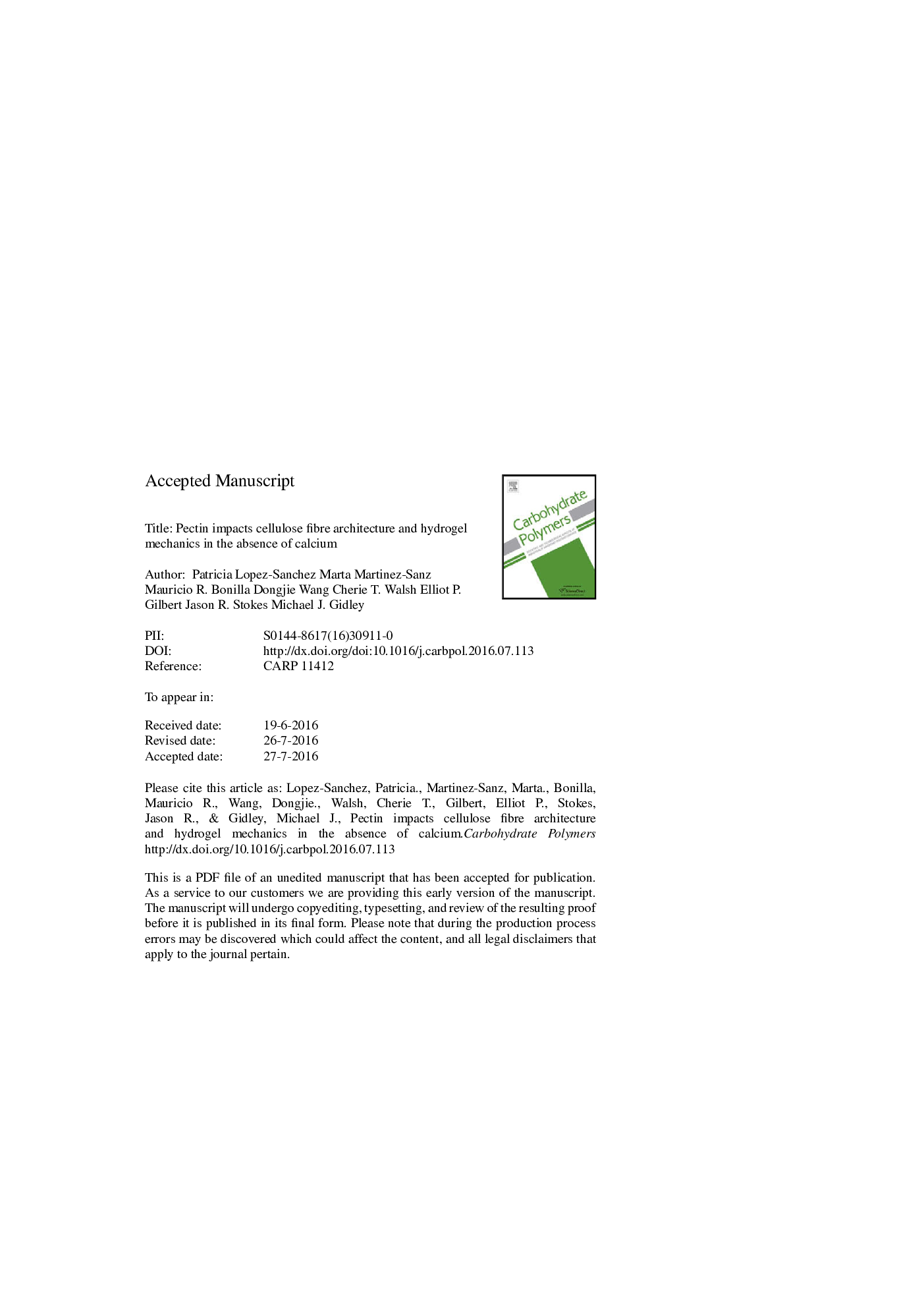| Article ID | Journal | Published Year | Pages | File Type |
|---|---|---|---|---|
| 7785119 | Carbohydrate Polymers | 2016 | 33 Pages |
Abstract
Pectin is a major polysaccharide in many plant cell walls and recent advances indicate that its role in wall mechanics is more important than previously thought. In this work cellulose hydrogels were synthesised in pectin solutions, as a biomimetic tool to investigate the influence of pectin on cellulose assembly and hydrogel mechanical properties. Most of the pectin (60-80%) did not interact at the molecular level with cellulose, as judged by small angle scattering techniques (SAXS and SANS). Despite the lack of strong interactions with cellulose, this pectin fraction impacted the mechanical properties of the hydrogels through poroelastic effects. The other 20-40% of pectin (containing neutral sugar sidechains) was able to interact intimately with cellulose microfibrils at the point of assembly. These results support the need to revise the role of pectin in cell wall architecture and mechanics, and; furthermore they assist the design of cellulose-based products through controlling the viscoelasticity of the fluid phase.
Related Topics
Physical Sciences and Engineering
Chemistry
Organic Chemistry
Authors
Patricia Lopez-Sanchez, Marta Martinez-Sanz, Mauricio R. Bonilla, Dongjie Wang, Cherie T. Walsh, Elliot P. Gilbert, Jason R. Stokes, Michael J. Gidley,
